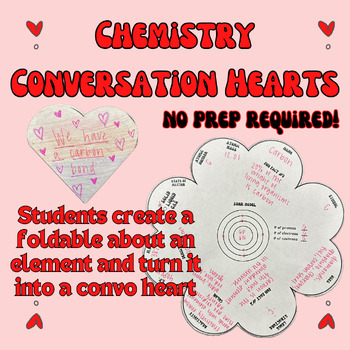Chemistry Conversation Hearts | Periodic Table Activity | Valentine's Day Craft
- PDF
Description
This resource invites learners to delve into the fascinating realm of chemical elements through creative expression. Each student will receive their foldable, designed to represent an element from the periodic table. Tasked with filling out these sections with crucial information about the assigned element – its atomic number, symbol, properties, and uses – students embark on an educational journey while embracing their artistic side.
Once the section are filled with elemental knowledge, students assemble them into a conversation heart. This activity not only reinforces understanding of the periodic table but also fosters fine motor skills, creativity, and collaborative learning. This resource allows students to be creative coming up with a conversation heart saying.
Perfect for individual study, group projects, or classroom displays, 'Chemistry Conversation Hearts' infuses fun and learning into science education. Encourage your students to cultivate their curiosity and understanding of elements as they craft their own conversation heart of scientific knowledge.
This resource is great for students who are just learning the periodic table or for a review for students!
This resource includes a general template for the foldable and ones that represent the elements 1-36 on the periodic table, so everyone in your classroom can have a different element!



